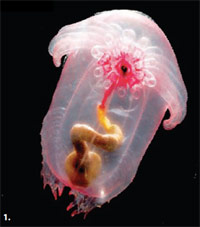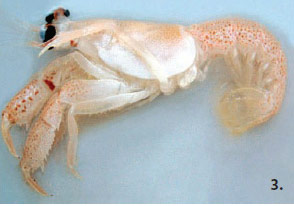 |
 |
 |
|
December 2010
|
UWI marine scientist involved in Global Census of Marine LifeA million species in the oceansDr Judith Gobin, UWI lecturer (Marine Biology) was one of only 400 international delegates invited to attend the historic “The Census of Marine Life’s – A Decade of Discovery Celebration“. This event was recently held (4th to 7th October) in London at the Royal Institute, the Royal Society and the Natural History museum where senior scientists gathered to share their results and to consider their implications.In one of the largest scientific collaborations ever conducted, more than 2,700 Census scientists from more than 80 nations spent over 9,000 days at sea, on more than 540 expeditions, plus countless days in labs and archives. Dr. Judith Gobin was one of these scientists (now known as the Census community) who contributed to this project and which culminated in an exciting celebration, as they presented to the world- the most up to date information on the numbers of species in the oceans. The idea of such a census was born in the late 1990s when leading marine scientists shared their concerns that our understanding of what lives in the oceans was really quite inadequate. A Census of Marine Life (CoML http://www.coml.org/) was proposed (and began in the year 2000), the aim of which was to assess and explain the diversity, distribution, and abundance of marine life. The census was organized around three questions: What did live in the oceans? What does live in the oceans? What will live in the oceans? The census community agreed to report on findings in the year 2010. You can find some of the key facts revealed by this timely census here: (http://origin.coml.org/pressreleases/census2010/PDF/Census-2010_Public_News_Release.pdf):
The following projects were carried out within the Census (adapted from http://www.coml.org/Highlights-2010): The Natural Geography in Shore Areas (NAGISA) project which “initiated the first global nearshore biodiversity inventory, sampling in seagrass beds and rocky shore communities using a standardized protocol to establish baseline information and long-term monitoring of nearshore sites. The project discovered new species and recorded species and habitats where they had not been previously found”. It was on this rocky shore project that Dr. Gobin worked with the regional group (Caribbean and South America) led by senior scientist Dr. Patricia Miloslavich of Simon Bolivar University in Venezuela.
Dr. Gobin acknowledges with thanks, the Census of Marine Life (CoML) for permission to reproduce this information. |



